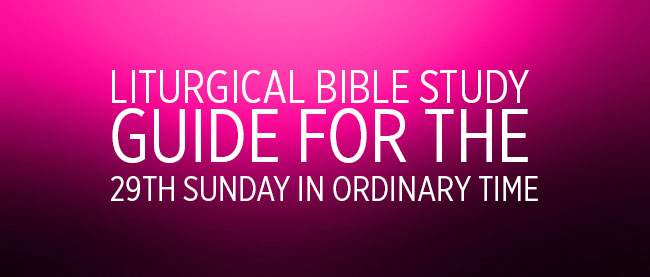1st Reading – Isaiah 45:1, 4-6
Cyrus was the founder of the Persian empire and as King of Persia he led the overthrow of the occupation by the Babylonians of Syria and Palestine in 539 B.C. The name Cyrus means shepherd, in Hebrew the name is koresh (from which David Koresh of Branch Davidian fame coined his name).
Cyrus is mentioned by name in our reading today even though Isaiah wrote at least 162 years earlier. Even if one accepts the theory of multiple authors for the book of Isaiah, today’s reading would have been written some twenty years prior to the Persian victory.
Cyrus was known as a liberator who had a policy of restoring the images of captured gods to their original temples, which he often rebuilt. It is said that Cyrus was so impressed at seeing his name in the Jewish Holy Scriptures that he released the people in 538 B.C. to return to Jerusalem and rebuild the Temple. Since the Jews had no divine image to place in their temple, he returned the sacred vessels of the temple which was looted by Nebuchadnezzar.
2nd Reading – 1 Thessalonians 1:1-5b
Today we start a five-week study of Saint Paul’s first letter to the Thessalonians.
Accompanied by Silas, Saint Paul arrived at Thessalonika in the course of his second missionary journey (A.D. 49-52) after leaving Philippi around the summer of the year 50. The city, now known as Salonika, is situated on the Aegean Sea and was a flourishing center of trade in Saint Paul’s time. Founded in 315 B.C. by Cassander, Thessalonika was named after his wife who was a sister of Alexander the Great. It came under Roman control in 186 B.C. As far as religion was concerned, it was a typical pagan city. Archaeology has unearthed the remains of many statues of gods and priestesses. Inscriptions discovered indicate that they were very ignorant of religious truth and had no clear notion of the survival of the soul after death.
There were quite a number of Jews living in Thessalonika in St. Paul’s time. In keeping with his custom, St. Paul went first to the synagogue to proclaim the Good News: Jesus was the Messiah; the Old Testament prophesies had come true in Him, He had redeemed mankind by His passion, death and resurrection. As a result of his teaching many
Jews and Gentiles came to believe, including “not a few of the leading women” (Acts 17:4). His success earned him the envy of certain Jews who organized demonstrations and attacked the house where he was staying. This led to St. Paul and his companions leaving Thessalonika before the instruction of the converts was complete. These converts also encountered persecution by the Jews.
Because of this, St. Paul sent Timothy to confirm the converts. Upon his return to St. Paul, Timothy reported that the Thessalonians were persevering in faith and charity despite still being harassed. Timothy also reported that certain questions were troubling the Thessalonians – things to do with life after death, and the second coming (or parousia).
These questions prompted St. Paul to write this first letter. It reassures the Thessalonians about the fate of those who had already died in the Lord.
Today we hear the opening greeting of this letter.
Gospel – Matthew 22:15-21
Recall that Jesus is in Jerusalem for His passion, death, and resurrection. It is the Wednesday of the first Holy Week and, as we heard last week, Jesus has been showing the chief priests and elders how God has been extending invitations to His people but they have been ignoring Him. Jesus’ enemies are now convinced that they will have to arrest Him.


